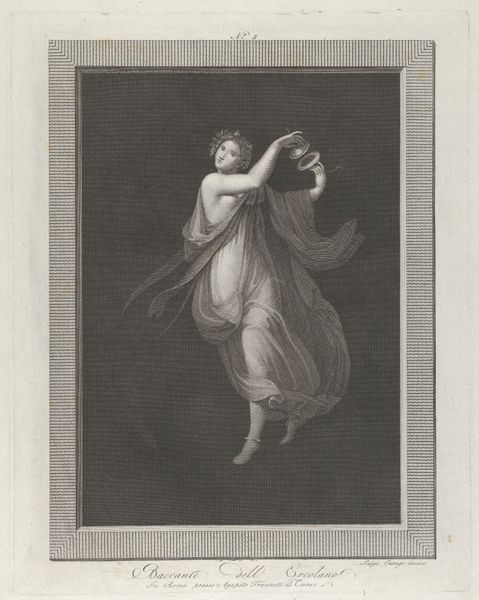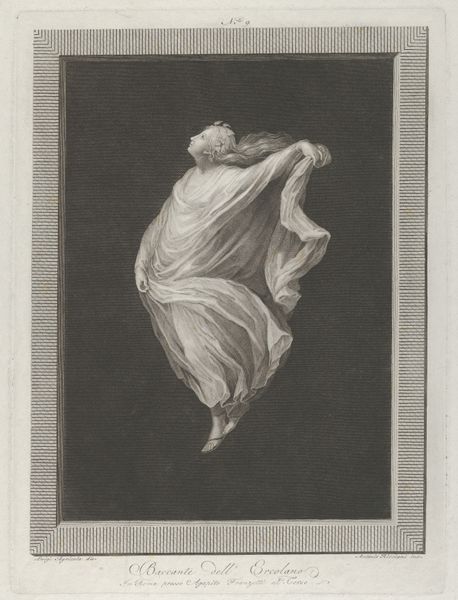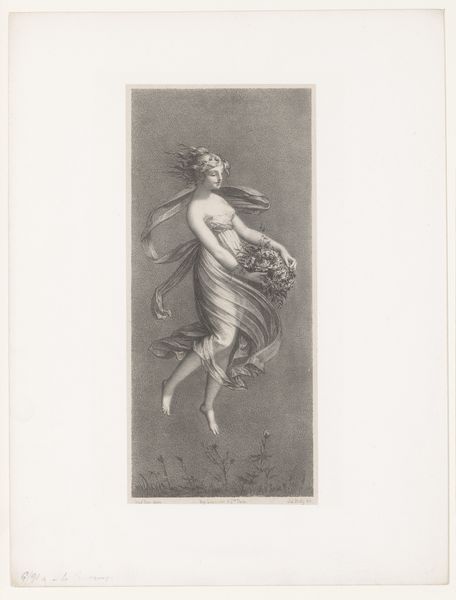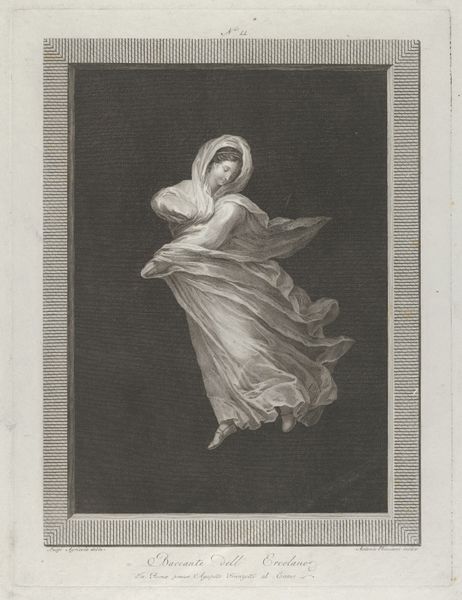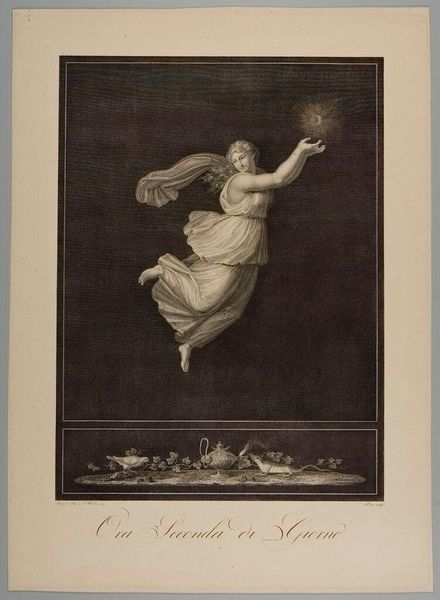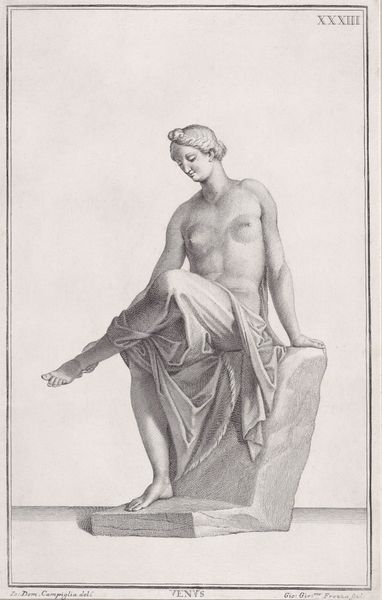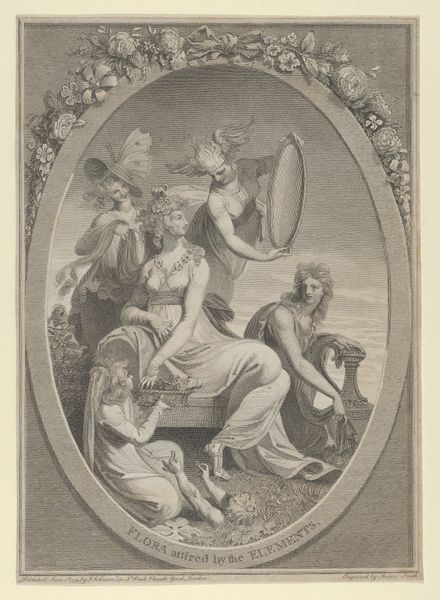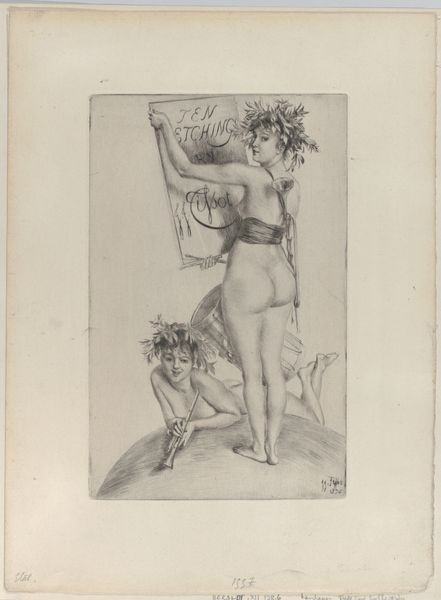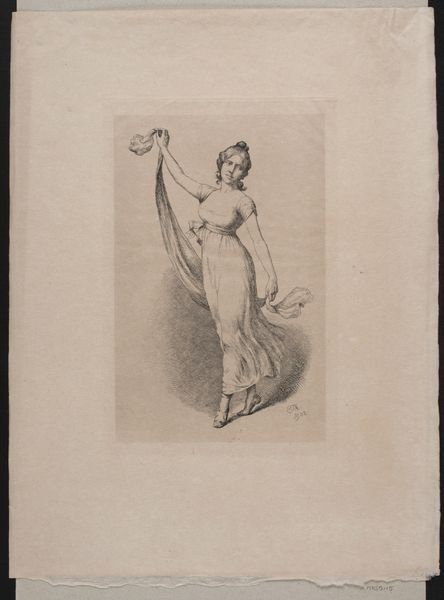
A partly naked bacchante seen from behind, facing right and holding an oval dish in her left hand, her drapery in her right, set against a black background inside a rectangular frame 1790 - 1825
0:00
0:00
drawing, print, engraving
#
drawing
#
neoclacissism
# print
#
figuration
#
history-painting
#
academic-art
#
nude
#
engraving
Dimensions: Sheet: 16 5/16 × 12 3/8 in. (41.5 × 31.4 cm) Plate: 13 1/8 × 10 1/16 in. (33.3 × 25.5 cm)
Copyright: Public Domain
Curator: Here we have "A partly naked bacchante seen from behind, facing right and holding an oval dish in her left hand, her drapery in her right, set against a black background inside a rectangular frame," created between 1790 and 1825. It's an engraving, and the artist is Antonio Ricciani. Editor: My first impression is of restrained energy, almost like a captured moment of ecstatic dance. The figure feels both powerful and vulnerable, frozen against that stark background. Curator: Yes, the contrast is striking. Notice how the artist uses line and shadow to define the form. The subject's contrapposto, the careful draping of the fabric—it all contributes to a very specific reading of classical ideals of beauty and balance. Editor: But "beauty" for whom? While the technique is impressive, I find myself questioning the power dynamics at play here. The male gaze is undeniable. We're invited to admire the exposed female form, rendered as a timeless ideal, but what about the lived experiences of real women during this era? How do notions of morality impact what the artist chooses to depict and emphasize? Curator: That’s a valid point. From a formalist perspective, I focus more on the surface, appreciating the interplay of light and form to represent the female nude as part of this Neoclassical fascination. Editor: Right, Neoclassicism sought to revive the artistic principles of ancient Greece and Rome, but it also perpetuated social hierarchies. By idealizing this female form within a mythological context, is the artist participating in the continued objectification of women under this veneer of 'high art'? Curator: One could argue the work serves as an aesthetic study in idealizing the female form and employing classical tropes, skillfully rendered, regardless of its modern critique of patriarchal structure. Editor: Precisely. Ultimately, it encourages viewers to challenge established narratives, revealing uncomfortable truths about power, representation, and desire in art. It makes us look beyond the surface. Curator: Well, by viewing it through different lenses, we discover layers within, expanding our perception and dialogue. Editor: Exactly. This exchange illuminates just how crucial interdisciplinary discussion about an image of a partly naked bacchante can be.
Comments
No comments
Be the first to comment and join the conversation on the ultimate creative platform.

